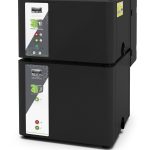
Despite efforts to increase the safety of working at an offshore location, accidents can occur at any given time, turning a workplace into a danger zone. People attempting to escape emergencies are trying to get out as fast as possible, only thinking about how to get away without following the company’s evacuation policy.
With the offshore exploration industry focusing more on QHSE offshore standards and encouraging companies to move from manual to digital solutions, the demand for alternatives to traditional paper-based safety regimes has increased. The combination of remote locations, the exploitation of highly explosive materials, and the harsh environment have constantly given the industry pressing concerns about its personnel’s safety. Knowing the location of personnel on-site at any time and improving emergency mustering adds an extra layer of security. This makes the complex process more visible, efficient, and profitable.
In general, things do not always go to plan in an orderly, safe manner in an emergency as they would in a controlled exercise drill. People’s behaviours inevitably change under stress due to the nature of the incident.
The classical approach in such situations has been to bring personnel to a muster area to manually count who has arrived, utilising a “T-card” system and manifest. A challenging task, even in ideal conditions.
Projects were initiated to improve accuracy and speed up the process of accounting for everyone on the rig, which would eventually lead to an automated emergency mustering solution. The goal is a reliable system that provides complete, timely, and proper muster (RFID Mustering).
In addition to basic needs such as muster swiftness and cost-effectiveness, criteria for a new system include the system’s ability to account for individuals not at their assigned muster point. When people cannot get to their ‘regular’ muster location during an actual emergency, this becomes the most challenging thing to manage.
Ease-of-use is an additional criterion for an electronic muster system, allowing new crewmembers to operate it within minutes of being on board if required. It should be robust and run in case of any single or, in some cases, multiple defects. In addition, such a system should quickly transmit the needed information in an understandable form to the command team on the vessel’s bridge or to the rescue operation team onshore and the muster takers at the individual muster locations.
A key role in overcoming safety challenges is the emergence of automated locating and a mustering system to receive accurate real-time visibility of all personnel. Such a system can make a genuinely life-saving impact on emergencies and offers many benefits to personnel and their respective company.
An additional layer of safety is a concept called mobile mustering. Mobile mustering uses mobile devices that expand pre-defined muster areas. Independent of existing infrastructure to read tags in an automated way at muster areas, mobile mustering devices can be used everywhere reading tags. As a result, both systems present a strong safety layer during emergencies – independently of the industry.




